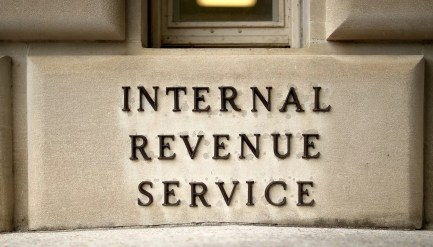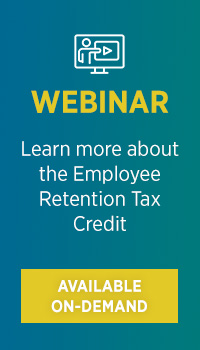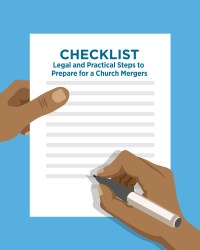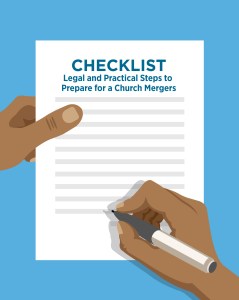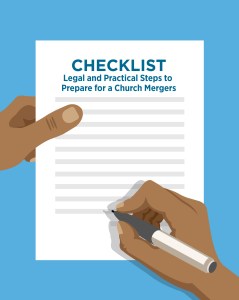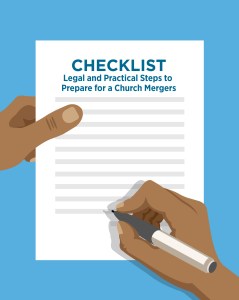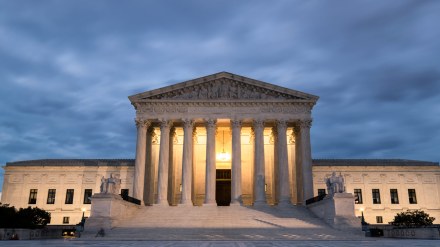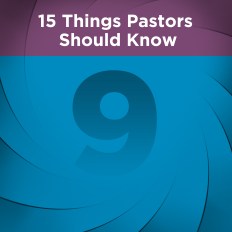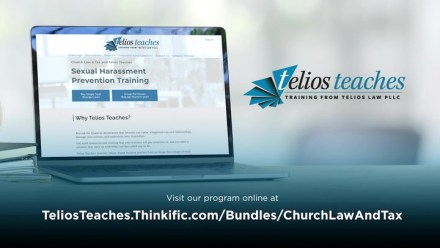Editor’s Note: On September 14, 2023, the Internal Revenue Service (IRS) announced it has immediately stopped processing new Employee Retention Credit (ERC) claims “amid [a] surge of questionable claims.”
Concerns raised by tax professionals, coupled with aggressive marketing to ineligible applicants, “highlights unacceptable risk to businesses and the tax system,” the agency said.
The IRS will continue processing previously filed claims and pay out claims it approves, it said, but processing times will take longer as the agency applies more scrutiny to address fraud concerns.
The IRS also said it is finalizing details to help entities victimized by “aggressive promoters” who have used repeated advertising and direct-contact methods to entice claim applications without carefully evaluating whether an entity truly qualifies for the credit.
Taxpayers who already have a claim submitted, but fear they were misled–including churches and small businesses–will be eligible for a special withdrawal option as well, the IRS said. It plans to announce details for the option soon.
The IRS said more than 600,000 claims remain unprocessed.
Church Law & Tax will continue to monitor developments.
Update. This article was revised on July 19, 2021, August 6, 2021, and December 2, 2022, to reflect needed changes, clarifications, and new information. It was updated again on February 17, 2023, to remove references to IRS FAQ pages after the agency pulled down those FAQ pages.
If your church, nonprofit, or school either experienced a significant decline in gross receipts and/or fully or partially suspended or reduced any significant part of its operations due to a federal, state, or local government mandate during any calendar quarter since the COVID-19 pandemic was first recognized in the United States, then it may be eligible for a special payment from the federal government.
This special payment is labeled the Employee Retention Credit (ERC). The ERC is provided via a credit against your church’s payroll taxes.
The credit amount could be very significant for your organization if:
- It experienced either of the adverse events described above in 2020, and had 100 or fewer full-time employees in 2019. And/or
- it experienced either of the adverse events described above in 2021 and had 500 or fewer full-time employees in 2019.
Under current law, employers generally have until April 15, 2024, to claim the ERC for the 2020 tax year, and until April 15, 2025, to claim the ERC for the 2021 tax year. However, we generally recommend filing ERC claims sooner rather than later, as it is always possible that the law changes and/or the ERC is repealed.
Background and context
The ERC is a relief provision originally contained in the Coronavirus Aid, Relief, and Economic Security (“CARES”) Act passed into law on March 27, 2020.
The Relief Act of 2020, enacted as a part of the Consolidated Appropriations Act of 2021 (CAA) and passed in late December 2020, made significant changes to the ERC. The most significant change from the CAA was that the ERC became available to Paycheck Protection Program (PPP) borrowers, subject to other eligibility requirements, and with the requirement that wages funded by forgiven PPP loan proceeds cannot be used as a basis for the ERC.
About three months later, the American Rescue Plan Act of 2021 (ARPA), enacted on March 11, 2021, created Internal Revenue Code Section 3134, which provides an ERC for wages paid from July 1, 2021, through December 31, 2021.
The ERC is essentially relief/stimulus money paid by the government to eligible employers.
Eligible employers claim the ERC as a credit against certain employer payroll taxes on their Form 941 for the applicable calendar quarter(s). The credit is refundable.
This means that if the employer qualifies for a credit that exceeds the applicable employer payroll taxes against which it is claimed for the applicable quarter, the excess credit is first used to reduce the employer’s required payroll tax deposits for all other federal payroll taxes. Any excess beyond required federal payroll tax deposits is refunded to the employer in cash.
The credit has no actual relationship to the employer-paid payroll taxes against which it is claimed. Claiming the credit against these employer payroll taxes on Form 941 is simply the government’s delivery method for transferring funds to eligible employers.
In March and April of 2021, the Internal Revenue Service (IRS) released Notice 2021-20 and Notice 2021-23, providing guidance regarding the ERC that applies from March 13, 2020, through December 31, 2020, and from January 1, 2021, through June 30, 2021, respectively. ARPA extended the ERC from July 1 through December 31, 2021. In August of 2021, the IRS released IRS Notice 2021-49 providing guidance regarding the ERC that applies from July 1 through December 31, 2021 (except for recovery start-up businesses). Therefore, with limited exception, the 2021 version of the ERC is only available from January 1, 2021, through September 30, 2021.
Also of note: The Taxpayer Certainty and Disaster Tax Relief Act of 2020, enacted as a part of the CAA in late 2020, also created a separate ERC for wages paid or incurred by nonprofit employers located in qualified disaster zones after the nonprofit employer’s business became inoperable because of damage from a 2020 qualified disaster.
Caution. The general Employee Retention Credit (the primary subject of this article) is distinguished from the Employee Retention Credit for “qualified disasters.” The Employee Retention Credit for qualified disasters is addressed at the end of this article.
How the ERC works
To claim the ERC for a prior quarter for which the church has already filed Form 941, the church must file a Form 941-X (an amended Form 941) for the applicable quarter(s). Special rules provide that the ERC for the first quarter of 2020 is claimed on the Form 941 or Form 941-X for the second quarter of 2020.
What follows is a summary of the ERC requirements and rules, as modified and interpreted by the CAA, ARPA, and IRS Notices. Note that entities which are part of a controlled group of entities are generally aggregated in making all determinations and calculations.
Caution. Note that additional guidance is expected from the IRS further clarifying the rules for applying the credit. Additional guidance may render portions of the information published here incomplete and/or inaccurate. Sign up for Church Law & Tax’s free newsletter to receive updates as they become available.
Applying for the ERC based on specific time periods
As noted above, churches currently can evaluate their eligibility for the ERC for at least three different time periods: March 13, 2020, through December 31, 2020; January 1, 2021, through June 30, 2021; and July 1, 2021, through December 31, 2021.
This section explains how churches can determine their eligibility for each of the time periods, including steps they can take to retroactively pursue the ERC for time periods that have already occurred.
March 13, 2020, through December 31, 2020
The following material is designed to help church leaders understand how the ERC works for this time period.
The ERC provides eligible employers—including tax-exempt organizations—a refundable credit against the employer’s share of Social Security tax (the 6.2-percent portion, not the 1.45-percent Medicare tax).
Caution. As described below, the fact that it is a refundable credit means that it is simply money from the government. If the amount of the credit exceeds the employer’s share of Social Security tax against which it is a credit, the organization can reduce the amount that it deposits to cover other payroll tax obligations. If the credit exceeds all such taxes owed by the employer, the employer receives a refund of the excess credit amount.
Note. The IRS has published special guidance to address coordination of the ERC with the employer Social Security tax payment deferral also available during 2020 pursuant to the CARES Act. The deferral of employer Social Security tax payments does not impact the calculation of the ERC.
Eligible employers must have carried on a trade or business during 2020 and satisfy one of two economic hardship tests (for tax-exempt organizations described in Section 501(c) of the Internal Revenue Code, all operations of the organization are considered a trade or business for this purpose):
- Had fully or partially suspended business operations during any calendar quarter of 2020 due to orders from a governmental entity limiting commerce, travel, or group meetings (for commercial, social, religious, or other purposes). Selections from IRS Notice 2021-20 Q&A Items 10-22, which provide additional information regarding the full or partially suspended business operations economic hardship test, are outlined below—see the Notice for full details.- IRS Notice 2021-20, Q&A Item 10 clarifies that orders, proclamations, or decrees from the federal government or any state or local government may be taken into account by an employer as “orders from an appropriate governmental authority” for this purpose.- IRS Notice 2021-20, Q&A Item 11 provides a safe harbor threshold that may be used by an organization to support a position that suspended operations were a more than nominal portion of the organization’s business operations. The guidance indicates that business operations will be deemed to constitute more than a nominal portion of an employer’s business operations if either the gross receipts from that portion of the business operations is not less than 10 percent of the total gross receipts (using the gross receipts of the same quarter in 2019), or the hours of service performed by employees in that portion of the business is not less than 10 percent of the total number of hours of service performed by all employees in the employer’s business (using number of hours of service performed by employees in the same quarter in 2019).- IRS Notice 2021-20, Q&A Item 18 indicates that modifications of a business operation due to orders from a governmental entity may be considered a full or partial suspension of business operations if such modifications had more than a nominal effect on the business operations. Whether or not business operations were more than nominally affected is a facts and circumstances determination. Examples of modifications that should be considered include limiting occupancy to provide for social distancing, requiring services to be performed only on an appointment basis (for businesses that previously offered walk-in service), changing the format of service, and so on.- IRS Notice 2021-20, Q&A Item 21 indicates that all members of an aggregated group are considered to have their operations partially suspended for purposes of the employee retention credit if the operations of one member of the aggregated group are suspended due to a governmental order. If one member’s business operations are partially suspended, it appears—based on available guidance—that the safe harbor threshold is based on 10 percent of the member, as opposed to 10 percent of the aggregated group.And/or
- Experienced a reduction in gross receipts of more than 50 percent in any calendar quarter of 2020 as compared to the same calendar quarter of 2019. If an organization meets this test for any calendar quarter in 2020, it is deemed to continue meeting this test through the end of the first subsequent calendar quarter of 2020 in which gross receipts exceed 80 percent of the amount for the corresponding quarter of 2019.
Note. If, after declining by more than 50 percent in a quarter, gross receipts do not increase for any subsequent quarter in 2020 to more than 80 percent of the amount for the corresponding quarter in 2019, the credit continues through the end of 2020.
For churches and other nonprofits, the IRS guidance indicates that the term “gross receipts” is defined in the same manner as described in Internal Revenue Code Section 6033, which is interpreted by Treasury Regulations (Reg. §1.6033-2(g)(4)). This means the gross amount received by the church during its annual accounting period from all sources without reduction for any costs or expenses.
Thus “gross receipts” includes, but is not limited to, (i) the gross amount received as contributions, gifts, grants, and similar amounts without reduction for the expenses of raising and collecting such amounts, (ii) the gross amount received as dues or assessments from members or affiliated organizations without reduction for expenses attributable to the receipt of such amounts, (iii) gross sales or receipts from business activities (including business activities unrelated to the purpose for which the organization qualifies for exemption, the net income or loss from which may be required to be reported on Form 990-T), (iv) the gross amount received from the sale of assets without reduction for cost or other basis and expenses of sale, and (v) the gross amount received as investment income, such as interest, dividends, rents, and royalties.
The rules do not appear to make a distinction between restricted and unrestricted contributions with respect to churches and other nonprofit organizations.
Unrealized gains/losses are not included in the definition of gross receipts.
Note. In Notice 2021-33, the IRS confirmed that an employer can elect to exclude forgiveness of a PPP loan from gross receipts for purposes of this evaluation. An employer makes this election by simply excluding the amount of forgiveness of the PPP loan from its gross receipts.
Questions 23 to 28 of Notice 2021-20 provide additional information regarding the determination of whether an organization experienced a significant reduction in gross receipts for purposes of ERC eligibility.
The following example helps illustrate how to apply the criteria described above:
Example. Church A’s gross receipts were $100,000, $190,000, $230,000, and $250,000 in the first, second, third, and fourth calendar quarters of 2020, respectively. Its gross receipts were $210,000, $230,000, $250,000, and $250,000 in the corresponding calendar quarters of 2019. Thus, Church A’s 2020 first, second, third, and fourth quarter gross receipts were approximately 48 percent, 83 percent, 92 percent, and 100 percent of its 2019 corresponding quarterly gross receipts.
Accordingly, Church A had a significant decline in gross receipts commencing on the first day of the first calendar quarter of 2020 (the calendar quarter in which gross receipts were less than 50 percent of the same quarter in 2019) and ending on the last day of the second calendar quarter of 2020 (the first subsequent quarter in 2020 for which the gross receipts were more than 80 percent of the amount in the same quarter in 2019).
Thus, Church A is eligible for an employee retention credit with respect to the first and second calendar quarters of 2020.
For this time period, the ERC is effective for wages paid after March 12, 2020, and before January 1, 2021.
The ERC is 50 percent of the first $10,000 in qualified wages per employee (including the value of qualified group health plan benefits as further described Questions 40 to 48 of Notice 2021-20). IRS Notice 2021-49 clarifies that an employee’s status as a full-time or part-time employee is irrelevant in determining qualified wages (i.e., qualified wages paid to both full-time and part-time employees are counted in calculating the ERC). Note, however, that wages paid with forgiven PPP loan proceeds may not be used as a basis for the ERC.
Qualified wages are further defined in Questions 30 to 48 of Notice 2021-20, and the ERC’s interaction with PPP loans is further described in Question 49 of Notice 2021-20.
Additionally, Question 58 describes a special rule for claiming an ERC for wages funded by a PPP loan that was not forgiven.
Caution. Wages for purposes of the ERC are generally FICA wages. Clergy compensation is not ordinarily considered FICA wages.
The credit is reduced by any credits claimed for emergency sick pay or emergency family leave pay under the Families First Coronavirus Response Act (FFCRA) or for other credits applicable to the same wages.
To the extent the credit exceeds the church’s Social Security tax due, the excess is considered a refundable overpayment.
For churches with an average of more than 100 full-time employees in 2019, only wages paid to employees for periods during which they were not providing services due to an economic hardship (either (1) a full or partial suspension of operations by order of a governmental authority due to COVID-19 or (2) a significant decline in gross receipts) are eligible for the credit.
For eligible churches with an average of 100 or fewer full-time employees in 2019, wages paid to all employees (regardless of whether they were providing services) during a period of economic hardship (as defined above) are eligible for the credit.
- Aggregation of employee counts of affiliated entities may be required. Questions 7, 8, 9, 32, and 55 within Notice 2021-20 provide additional information regarding the aggregation rules applicable to the ERC.
- Employee counts are made using the methods applicable under the Affordable Care Act (ACA) in determining whether an employer is an “applicable large employer.” IRS Notice 2021-49 clarifies that employers are not required to include full-time equivalents when determining the average number of full-time employees—just full-time employees.
Note. Only the counting method is applicable. The employee count thresholds for the ERC are unrelated to the thresholds for the ACA. Question 31 within Notice 2021-20 provides additional information regarding the calculation of employee counts for purposes of the ERC.
Questions 70 and 71 from Notice 2021-20 provide information regarding documentation that should be kept in an employer’s records as support for the ERC.
Observations for churches, schools, and other organizations subject to mandatory suspension of group meetings
Thankfully, few churches, schools, and charities experienced revenue declines in a calendar quarter of 2020 in excess of 50 percent as compared to 2019, so that aspect of ERC eligibility has limited application.
However, churches, schools, and other organizations that were subject to mandatory full or partial suspension of operations or group meetings (including mandatory government orders that required or resulted in capacity limitations in connection with such operations or group meetings, assuming the capacity limitations had more than a nominal effect on the operations) between March 13, 2020, and December 31, 2020, appear eligible for the ERC regardless of whether they were able to continue carrying on certain activities via remote (online) participation.
Applying this interpretation would require the organization to evaluate whether it had “operations that were fully or partially suspended during any calendar quarter in 2020 due to orders from an appropriate governmental authority limiting commerce, travel, or group meetings (for commercial, social, religious, or other purposes) due to COVID-19.”
Such a determination may not be easy to make in every instance since certain safety protocol communications made by government officials or agencies may not have reached the level of authority of “orders.”
Note. Question 10 from Notice 2021-20 offers additional information on what qualifies as a governmental order for this purpose.
Additionally, language in Question 15 from Notice 2021-20 states that if the “employer is able to continue operations comparable to its operations prior to the closure by requiring its employees to telework, the employer’s operations are not considered to have been fully or partially suspended as a consequence of a governmental order.”
While it may be tempting to assume that such language means that churches that offered virtual worship services were able to “continue operations comparable to its operation prior to the closure,” we would argue that such is not the case. Not only are virtual worship services not comparable to regular in-person worship meetings, but most churches stopped or limited other significant aspects of their operations, such as children’s ministries, Sunday schools, fellowship events, and more.
Similarly, even though schools may have continued conducting classes online, many other school functions were stopped or limited, including athletics and other extracurricular activities.
Until and unless additional official guidance to the contrary is published, our firm believes this position with respect to churches and schools is reasonable, assuming that the suspended operations are more than a nominal portion of the church or school’s business operations as defined in Notice 2021-20.
Church leaders should further consult with qualified local legal counsel to make the final determination as to whether their church was subject to a full or partial suspension of activities due to government orders.
Calculating the ERC for the 2020 quarters
Assuming the IRS agrees with the above interpretation, the ERC could represent a significant financial benefit to churches, schools, and other entities required to suspend or limit group meetings, particularly those with 100 or fewer full-time employees in 2019.
The reason: for such organizations, the credit is half of the first $10,000 in wages paid to all employees during the applicable period, regardless of whether such employees are providing services for the organization or not. That treatment contrasts dramatically with the treatment of organizations with more than 100 full-time employees in 2019. For those organizations, the credit is half of the first $10,000 in wages paid during the applicable period only to employees while they are not currently providing services to the organization.
Example. Oak Church employed 85 full-time employees in 2019 and 2020. Oak Church obtained a PPP loan that was fully forgiven in 2020. It does not qualify for any wage-related credits other than the ERC. On March 15, 2020, Oak Church was ordered by government officials to stop holding in-person worship services. That mandate continued through May 31, 2020, at which time government officials permitted the church to hold limited-capacity worship services. The mandate for limited capacity worship services continued through December 31, 2020, and included a prohibition against conducting certain of the church’s other activities involving gatherings.
Oak Church continued to pay all of its employees for the entire time during which in-person worship services were prohibited or limited. The operations that ceased as a result of government orders met IRS criteria for being more than nominal.
Ten of its employees (other than clergy) performed no services for Oak Church during the period from March 15, 2020, through May 31, 2020 (due to government orders to cease holding worship services), but were nonetheless paid.
During the period from March 15, 2020, through December 31, 2020, Oak Church paid its 85 non-clergy employees $42,000 each in wages (including qualified health plan benefits). Oak Church ignored the wages it paid employees with PPP loan funds. Half of the first $10,000 of non-PPP wages paid to each of its employees during the applicable period is $5,000 per employee. Oak Church is entitled to an Employee Retention Credit of $425,000 (85 x $5,000).
The credit is refundable. To the extent that the credit exceeds Oak Church’s employer Social Security tax due on its Form 941s for the applicable quarters of 2020, Oak Church may reduce its federal employer payroll tax deposits for the applicable periods to zero and receive a refund of the credit amount in excess of the otherwise required deposits.
Note. The IRS has published guidance on the interaction between the ERC and PPP loan rules as they relate to identifying the wages applicable to each (see questions 49 and 58 in Notice 2021-20). The ERC cannot be claimed with respect to wages paid with PPP loan funds that are forgiven.
This example specifically notes that the employer ignored wages paid with PPP loan funds in calculating wages paid by the employer for purposes of the ERC.
Note. If Oak Church had an average of more than 100 employees in 2019, the credit would apply only with respect to the wages paid to the 10 employees who did not provide services and only during the period in which they were paid while not providing services.
January 1, 2021, through June 30, 2021
Through Notice 2021-23, the IRS specifically addresses the ERC for the period January 1, 2021, through June 30, 2021, and amplifies guidance given in Notice 2021-20. Unless otherwise noted below, information included in Notice 2021-20 continues to apply to the ERC for January 1, 2021, through June 30, 2021.
The following material is designed to help church leaders understand the ERC for this time period.
For this time period, the ERC provides eligible employers—including tax-exempt organizations—a refundable credit against the employer’s share of Social Security tax (the 6.2 percent portion, not the 1.45 percent Medicare tax).
Eligible employers must have carried on a trade or business during 2021 and satisfy one of two economic hardship tests (again, for tax-exempt organizations described in Section 501(c) of the Internal Revenue Code, all operations of the organization are considered a trade or business for this purpose):
- Have fully or partially suspended business operations during either the first or second quarter of 2021 due to orders from a governmental entity limiting commerce, travel, or group meetings (for commercial, social, religious, or other purposes).
And/or
- Experience a reduction in gross receipts of more than 20 percent in either the first or second quarter of 2021 as compared to the same calendar quarter of 2019. Gross receipts are defined in the same manner as for the 2020 ERC described above. See the notes above for special considerations in the definition of gross receipts for purposes of the ERC. For quarters in 2021, a special rule allows organizations to elect to use the immediately preceding quarter to compare to 2019. For example, in measuring a decline in gross receipts for the second quarter of 2021, an organization can elect to use the first quarter of 2021 to compare to the first quarter of 2019. IRS Notice 2021-49 confirms that the IRS does not require consistency from quarter to quarter in making such an election.Special rules apply for organizations not in operation during the applicable quarter of 2019 and for seasonal employers.
Example. Church A’s gross receipts were $150,000 and $190,000 in the first and second calendar quarters of 2021, respectively. Its gross receipts were $210,000 and $230,000 in the first and second calendar quarters of 2019, respectively. Thus, Church A’s 2021 first and second quarter gross receipts were approximately 71 percent and 83 percent of its 2019 first and second quarter gross receipts, respectively.
Accordingly, Church A had a qualifying decline in gross receipts for the first calendar quarter of 2021 (the calendar quarter in which gross receipts were less than 80 percent of the amount in the same quarter in 2019) but not for the second quarter of 2021 (because gross receipts for that quarter were not less than 80 percent of the amount in the same quarter of 2019).
Thus, Church A is eligible for an ERC with respect to the first quarter of 2021 only. However, if Church A elected (with respect to the second quarter) to use the immediately preceding quarter as a basis for comparison to 2019, it would have a qualifying decline in gross receipts for the second quarter as well.
The credit is 70 percent of the first $10,000 in wages per employee (including the value of qualified health plan benefits) paid during each of the first two calendar quarters of 2021, during which the church qualifies.
Thus, the maximum credit per employee is $7,000 per quarter for the first two quarters of 2021 (for a total of $14,000).
Note. Wages for purposes of the ERC are generally FICA wages. Clergy compensation is not ordinarily considered FICA wages.
The credit is reduced by any credits claimed for emergency sick pay or emergency family leave pay under the FFCRA or for other credits applicable to the same wages.
To the extent the credit exceeds the church’s Social Security tax due, the excess is considered a refundable overpayment.
For employers with an average of more than 500 full-time employees in 2019, only wages paid to employees for periods during which they were not currently providing services due to an economic hardship (either (1) a full or partial suspension of operations by order of a governmental authority due to COVID-19 or (2) a significant decline in gross receipts) are eligible for the credit.
For eligible employers with an average of 500 or fewer full-time employees in 2019, wages paid to all employees (regardless of whether they were providing services) during a period of economic hardship (as defined above) are eligible for the credit.
- Aggregation of employee counts of affiliated entities may be required.
- Employee counts are made using the methods applicable under the ACA in determining whether an employer is an “applicable large employer.” IRS Notice 2021-49 clarifies that employers are not required to include full-time equivalents when determining the average number of full-time employees—just full-time employees.
Note. Again, only the ACA counting method is applicable, not the ACA employee-count thresholds.
Observations for Churches, Schools, and Other Organizations Subject to Mandatory Suspension of Group Meetings
Some churches, schools, and charities may experience revenue declines in the first or second calendar quarter of 2021 in excess of 20 percent as compared to the same quarter of 2019 and may qualify for the credit accordingly.
Additionally, churches, schools, and other organizations that were subject to mandatory full or partial suspension of operations or group meetings (including mandatory government orders that required or resulted in capacity limitations in connection with such operations or group meetings, assuming the capacity limitations had more than a nominal effect on the operations) appear eligible for the ERC regardless of whether they were able to continue carrying on certain of their activities via remote participation. The same analysis discussed for the March 13, 2020, through December 31, 2020, time period above also applies here.
Calculating the ERC for January 1, 2021, through June 30, 2021
Again, the ERC could represent a significant financial benefit to churches, schools, and other entities required to suspend or limit group meetings, particularly those with 500 or fewer full-time employees in 2019.
The reason is that for such organizations, the credit is 70 percent of the first $10,000 in wages paid to all employees during the applicable quarter, regardless of whether such employees are providing services for the organization or not.
That treatment contrasts dramatically with the treatment of organizations with more than 500 full-time employees in 2019. For those organizations, the credit is 70 percent of the first $10,000 in wages paid during the applicable quarter only to employees while they are not currently providing services to the organization.
Example. Maple Church had 285 full-time non-clergy employees in 2019, 2020, and 2021 and no part-time employees. It obtained and fully spent a PPP loan in 2020. It did not obtain a second PPP loan. It does not qualify for any wage-related credits other than the ERC.
On March 15, 2020, Maple Church was ordered by government officials to stop holding in-person worship services. That mandate continued through May 31, 2020, at which time government officials permitted the church to hold limited-capacity worship services. The mandate for limited capacity worship services continued through March 31, 2021, and included a prohibition against conducting certain of the church’s other activities involving gatherings.
Maple Church continued to pay all of its employees for the entire time during which in-person worship services were prohibited or limited. The operations that ceased as a result of government orders met IRS criteria for being more than nominal.
Between March 15, 2020, and May 31, 2020, 80 of its employees (other than clergy) performed no services for Maple Church (due to government orders to cease holding worship services), but were nonetheless paid.
During the period from January 1, 2021, through March 31, 2021, Maple Church paid its 285 non-clergy employees $12,000 each in wages (including qualified health plan benefits).
For this time period, 70 percent of the first $10,000 of wages paid to each of its employees during the first quarter of 2021 is $7,000 per employee. Maple Church is entitled to an ERC of $1,995,000 (285 x $7,000).
The credit is refundable. To the extent that the credit exceeds Maple Church’s employer Social Security tax due on its Form 941s for the first quarter of 2021, Maple Church may reduce its federal employer payroll tax deposits for that quarter to zero and receive a refund of the credit amount in excess of the otherwise required deposits.
Note. If Maple Church had an average of more than 500 employees in 2019, the credit would not apply. For employers of that size, the credit would apply only with respect to the wages paid to employees who did not provide services and only during the period in which they were paid while not providing services. In this example, Maple Church did not have employees who were paid while not providing services during the first quarter of 2021.
For the Period July 1, 2021, through September 30, 2021
Through ARPA and the Infrastructure INvestment Act (enacted in November of 2021), the ERC for the third quarter of 2021 generally follows the same rules for the first and second quarter 2021, with specific changes noted below. The IRS released IRS Notice 2021-49 that provides additional guidance regarding the ERC for this time period.
Of note:
- The ERC for this period is a refundable credit against the church share of Medicare tax (the 1.45 percent portion, not the 6.2 percent Social Security tax as in prior quarters). If the amount of the credit exceeds the church’s share of Medicare tax against which it is a credit, the organization can reduce the amount that it deposits to cover other payroll tax obligations. If the credit exceeds all such taxes owed by the employer, the employer receives a refund of the excess credit amount.
- An election may be made by the church in evaluating its eligibility for the ERC in the third and fourth quarter 2021 to calculate its gross receipts reduction threshold based on the immediately preceding calendar quarter as compared to the same quarter in 2019. For example, for purposes of determining whether the employer meets the gross receipts reduction threshold for ERC eligibility in the third quarter of 2021, the employer may elect to compare its second quarter 2021 gross receipts with its gross receipts in second quarter 2019. IRS Notice 2021-49 confirms that the IRS does not require consistency from quarter to quarter in making such an election.Special rules continue to apply for organizations not in operation during the applicable quarter of 2019 and for seasonal employers.
- A special rule was created for employers that have experienced a reduction in gross receipts in a quarter in excess of 90 percent of the gross receipts for the same quarter in 2019.
Not-so-obvious 2020 and 2021 ERC eligibility considerations
Nuances within the ERC eligibility rules and definitions described above create opportunities for organizations to be eligible for the ERC that may not be obvious to an organization without careful consideration of an organization’s particular facts. We have included some examples of “not-so-obvious” scenarios that may cause your church to be eligible for the ERC. This is not an exhaustive list of possibilities but is intended to demonstrate that the definitions and rules described in the guidance above must be carefully considered and evaluated.
- In considering the gross receipts reduction thresholds for 2020 and 2021, did your church engage in a special fundraising or capital campaign in 2019, such that the mechanical calculation of gross receipts in a particular quarter in 2020 or 2021 as compared to the same quarter in 2019 meets the ERC gross receipts reduction thresholds?
- In considering the gross receipts reduction thresholds for 2020 and 2021, did your church liquidate a significant asset or assets in 2019, such that the mechanical calculation of gross receipts in a particular quarter in 2020 or 2021 as compared to the same quarter in 2019 meets the ERC gross receipts reduction thresholds?
- In considering the gross receipts reduction thresholds for 2020 and 2021, did your church receive an unusual grant or gift in a particular quarter in 2019? If so, have you considered whether your church’s gross receipts in 2020 or 2021 for that same quarter may meet the ERC gross receipts reduction thresholds?
- In considering the full or partial suspension of business operations economic hardship test, have you considered capacity limitations that your church imposed in its operations in order to adhere to a government mandate regarding social distancing—even if your church was considered an “essential business?” Did such capacity limitations more than nominally affect your church’s operations?
- In considering the full or partial suspension of business operations economic hardship test, have you considered whether a key supplier or landlord’s operations were suspended due to government orders, which impacted your church in more than a nominal manner?
Not-So-Obvious Partial Suspension of Activities Examples
- A church operates in a city that mandated no physical assembly of groups of more than 10 people, including churches, for a period of time during 2020. While the church continued to offer certain services through online channels, such services were not comparable to the church’s customary activities; and the church had to completely cease its fellowship and children’s ministry activities during that time.
- A church operates in a city that mandated social distancing of at least six feet in all gatherings during a certain period.The church’s facility size was such that the mandate made it impossible to continue its customary activities due to capacity constraints imposed by the city mandate.While the church continued to offer certain services through online channels, such services were not comparable to the church’s customary activities; and the church had to completely cease its fellowship and children’s ministry activities during that time.
Aggregation of Related Organizations for ERC Purposes
The law and guidance surrounding the ERC are not abundantly clear with respect to whether affiliated nonprofit organizations are required or permitted to aggregate their activities and operations in determining eligibility for, or the amount of, an ERC claim. For example, assume that a church has the authority to control its separately incorporated foundation via the appointment of the foundation’s board members or that a church has such authority with respect to its separately incorporated school. In such cases, are the “parent” organizations required, or permitted, to aggregate their activities and operations with their “subsidiary” organizations for ERC purposes? The answer could make a huge difference in eligibility for, or the amount of, an ERC claim depending on the circumstances.
For example, assume that a church had 450 full-time employees in 2019 and that its subsidiary foundation had 70 employees in 2019. Aggregation would have a very negative effect on the potential amount of an ERC claim since the total 2019 full-time employee count is over 500 employees.
On the other hand, assume that a church and its subsidiary school had a total of 300 full-time employees in 2019 (200 in the church and 100 in the school). Assume further that the school (but not the church) had a partial suspension of its operations due to government orders during the first three quarters of 2021. Based on IRS guidance as we understand it, for the purposes of an ERC claim, the aggregation of the church and the school would mean that the church is deemed to have a partial suspension of operations due to government orders for the same period as the school. Aggregation would cause the church to be eligible for a very sizable ERC claim, even though it would not otherwise qualify on its own.
Since there is very little official guidance on the matter of aggregation of affiliated tax-exempt entities for ERC purposes, our firm works with our clients on a case-by-case basis in addressing this issue, together with special legal counsel. Thus far, legal counsel seems to be generally advising clients that aggregation is required in situations where one exempt organization controls another exempt organization—except in cases when one of the exempt organizations is a church. When one of the entities is a church, counsel generally seems to conclude that the church may elect to aggregate, but it is not required to do so.
Notwithstanding this commentary here about conclusions generally being reached by our clients’ legal counsel, it’s worth reiterating our strong recommendation that this issue should be addressed case-by-case and that special legal counsel should provide guidance to each affiliated group on the matter of aggregation, especially if the amounts of ERC that would be claimed would be significantly affected by the conclusion.
2020 ERC for Qualified Disasters
As noted at the beginning of the article, the Taxpayer Certainty and Disaster Tax Relief Act of 2020 created a separate ERC for wages paid or incurred by nonprofit employers located in qualified disaster zones after the nonprofit employer’s business became inoperable because of damage from a 2020 qualified disaster.
Qualified disaster zones are specifically designated for each federally declared disaster. The qualified disaster ERC is equal to 40 percent of up to $6,000 of wages for each qualifying employee for the 2020 tax year. Wages for this purpose are generally FICA wages and do not include any wages claimed in applying for the COVID-19 relief ERCs described above.
Unlike the general COVID-19 relief ERC credit described above, the qualified disaster ERC is a non-refundable credit against the employer’s share of Social Security tax (the 6.2 percent portion, not the 1.45 percent Medicare tax).
Nonprofits may claim the credit by filing Form 5884-D. A list of 2020 federally declared disasters will be included in the Form 5884-D instructions (the COVID-19 pandemic is not included in the list of 2020 federally declared disasters for this purpose).
Kaylyn Varnum, CPA, is a partner and the assistant national director for tax services at Batts Morrison Wales & Lee (BMWL); Michele Wales, CPA, is a partner and the national director for tax services at BMWL; Michael (Mike) E. Batts, CPA, is the managing partner of BMWL. BMWL is an accounting firm dedicated exclusively to serving churches, ministries, and other nonprofit organizations across the United States.
